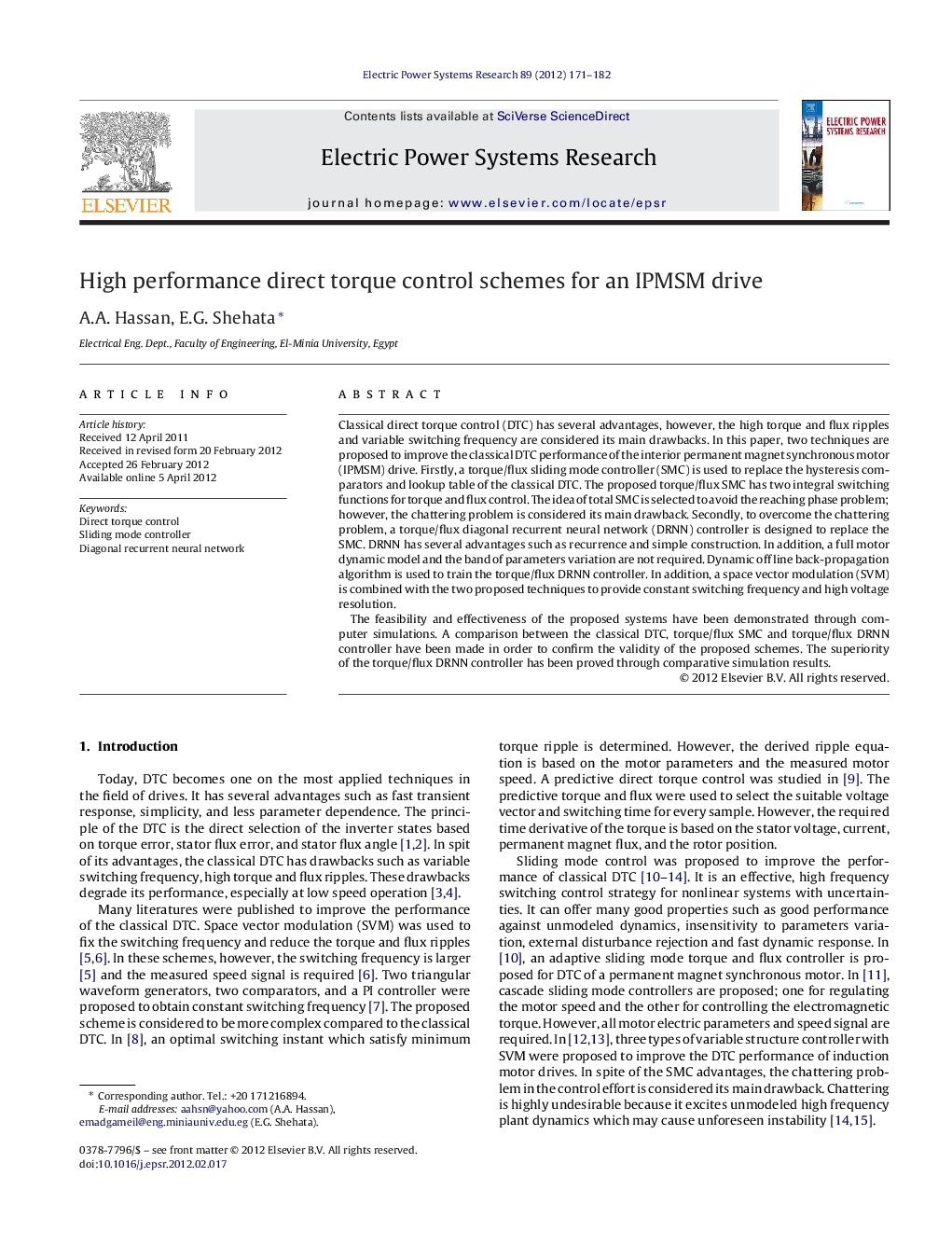| Article ID | Journal | Published Year | Pages | File Type |
|---|---|---|---|---|
| 704922 | Electric Power Systems Research | 2012 | 12 Pages |
Classical direct torque control (DTC) has several advantages, however, the high torque and flux ripples and variable switching frequency are considered its main drawbacks. In this paper, two techniques are proposed to improve the classical DTC performance of the interior permanent magnet synchronous motor (IPMSM) drive. Firstly, a torque/flux sliding mode controller (SMC) is used to replace the hysteresis comparators and lookup table of the classical DTC. The proposed torque/flux SMC has two integral switching functions for torque and flux control. The idea of total SMC is selected to avoid the reaching phase problem; however, the chattering problem is considered its main drawback. Secondly, to overcome the chattering problem, a torque/flux diagonal recurrent neural network (DRNN) controller is designed to replace the SMC. DRNN has several advantages such as recurrence and simple construction. In addition, a full motor dynamic model and the band of parameters variation are not required. Dynamic off line back-propagation algorithm is used to train the torque/flux DRNN controller. In addition, a space vector modulation (SVM) is combined with the two proposed techniques to provide constant switching frequency and high voltage resolution.The feasibility and effectiveness of the proposed systems have been demonstrated through computer simulations. A comparison between the classical DTC, torque/flux SMC and torque/flux DRNN controller have been made in order to confirm the validity of the proposed schemes. The superiority of the torque/flux DRNN controller has been proved through comparative simulation results.
► Studying the classical direct torque performance. ► Suggesting two schemes to improve the direct torque performance. ► In first scheme, a torque/flux sliding mode controller is used. ► In the second scheme, a torque/flux diagonal recurrent neural network is used. ► The performance of the classical direct torque control, the torque/flux sliding mode controller and the torque/flux diagonal recurrent neural network controller are compared. ► Simulation results show the effectiveness of the torque/flux diagonal recurrent neural network.
